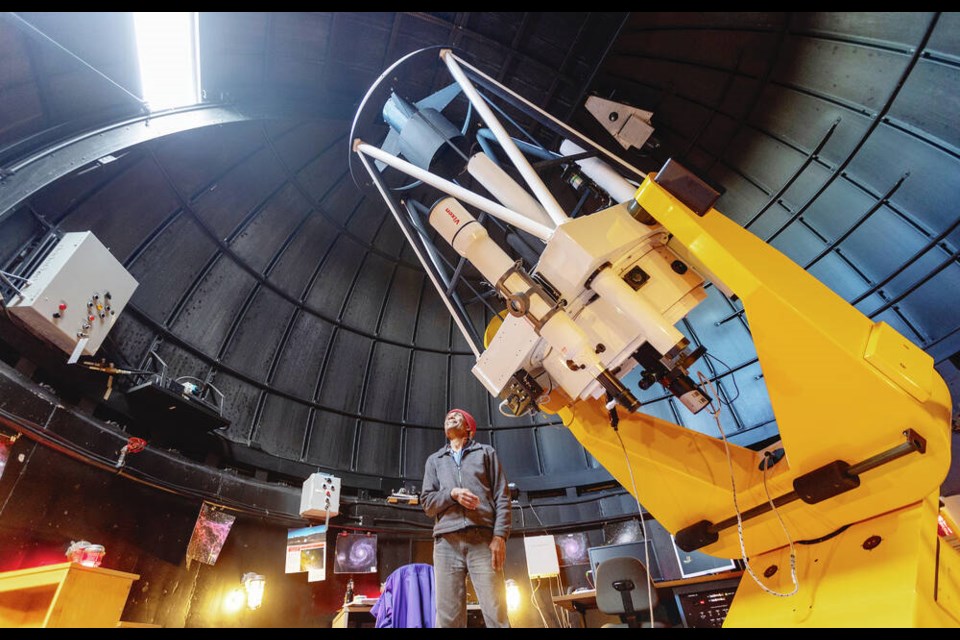An unusual green-tailed comet that last appeared in our skies 50,000 years ago is making a return trip this month, when it can be viewed with the naked eye.
It’s a once-in-many-lifetimes opportunity, since even if it does return, it will take tens of thousands of years to reappear on its long orbit, says Karun Thanjavur, a senior astronomy laboratory instructor at UVic.
The comet can be viewed already with high-powered equipment. But on Feb. 1, it will be closest to the earth at more more than 40 million kilometres — making it easier to see from about 9 p.m. to 10 p.m.
Thanjavur recommends going to a dark place away from light pollution, such as Cattle Point in Oak Bay, Island View Beach on the Saanich Peninsula or somewhere in Metchosin.
The comet, dubbed C/2022 E3, will appear as a “smudge” in the sky, he said, but viewers can see it more clearly with binoculars or a telescope.
He recommends looking between the Big Dipper and the Cassiopeia constellation, which resembles an inverted “W.”
The comet will not be as bright as the Neowise comet that passed by Earth in 2020, and has a stubby-shaped tail, Thanjavur said.
UVic’s astronomy lab hopes to set up some telescopes for the public to view the comet — Thanjavur said to watch its Facebook page for details.
Observers in the northern hemisphere will find the comet in the morning sky, as it moves swiftly toward the northwest during January, according to NASA. It’s expected to become visible in the southern hemisphere in early February.
The space agency describes the chance to see the comet as an “an awesome opportunity to make a personal connection with an icy visitor from the distant outer solar system.”
The comet was discovered last year by astronomers at Zwicky Transient Facility at Palomar Observatory in California. At that time, the comet was inside the orbit of Jupiter, NASA said.
Thanjavur said comet discovery is becoming more common as telescopes have improved. Now, many dedicated telescopesare directed at the sky nightly, and data they collect is often made available publicly, he said.
More eyes on the data results in more discoveries, he said.
“In some ways, it is like looking for a needle in a haystack.”
The C/2022 E3 comet is believed to have originated from the Oort Cloud, a massive area holding frozen chunks of dust and gas. Those chunks turn into comets when they come closer to the sun’s heat and light and begin evaporating.
Comets are hit by “high-energy” ultraviolet radiation from the sun, which “excites the gas,” causing it to emit light, Thanjavur said.
The gas is carbon and in this case, its light is greenish in colour. Dust that is evaporated forms a tail as it reflects sunlight. That means there are two tails — one from the gas and another from the dust, he said.



